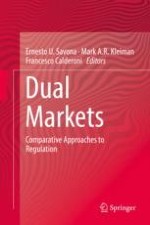2017 | OriginalPaper | Buchkapitel
20. Problem Gambling, Mental Health, Alcohol and Drug Abuse: Effects on Crime
verfasst von : Earl L. Grinols
Erschienen in: Dual Markets
Aktivieren Sie unsere intelligente Suche, um passende Fachinhalte oder Patente zu finden.
Wählen Sie Textabschnitte aus um mit Künstlicher Intelligenz passenden Patente zu finden. powered by
Markieren Sie Textabschnitte, um KI-gestützt weitere passende Inhalte zu finden. powered by
